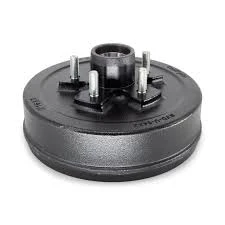Oca . 17, 2025 00:42
Listeye geri dön
cars that still use drum brakes
In an era where automotive technology continually pushes the boundaries of innovation, it may come as a surprise that some modern cars still employ drum brakes. Understanding why drum brakes remain in use, even as disc brakes become more prevalent, can offer invaluable insights, especially for those wishing to make informed decisions when purchasing vehicles that prioritize performance, cost-effectiveness, and reliability.
It's important to recognize the role of authentic experiences from vehicle owners and mechanics in understanding the real-world applications of drum brakes. Many seasoned automotive experts vouch for the reliability of drum brakes in long-term use, emphasizing their durability and resilience, especially in utility vehicles that often face challenging driving conditions. Such endorsements build trust and confidence among potential buyers, highlighting the practicality of opting for vehicles with drum brakes if they align with their driving needs. In recent automotive manufacturing, some cars that still employ drum brakes include the likes of the Honda Fit and the Toyota Yaris. These vehicles, often lauded for their affordability and efficiency, demonstrate how drum brakes can be effectively integrated without compromising on essential modern-day features. Automakers strategically employ drum brakes in these models to maintain an attractive price point while ensuring that the vehicle meets necessary safety and performance standards. In conclusion, while the automotive industry has largely transitioned to disc brakes for their superior performance characteristics, drum brakes continue to serve a vital role, particularly in markets that prioritize affordability and low maintenance costs. Recognizing a car equipped with drum brakes as a viable option should not be met with skepticism but rather appreciated for what it offers within its specific context. For car enthusiasts and prospective buyers, understanding the nuances of drum brakes—how they function, their benefits, and their place within the market—encourages a more enriching car selection process. By combining expertise, trustworthiness, and authentic experiences, the conversation around drum brakes can shift from outdated technology to a legitimate choice that meets the demands of various drivers.


It's important to recognize the role of authentic experiences from vehicle owners and mechanics in understanding the real-world applications of drum brakes. Many seasoned automotive experts vouch for the reliability of drum brakes in long-term use, emphasizing their durability and resilience, especially in utility vehicles that often face challenging driving conditions. Such endorsements build trust and confidence among potential buyers, highlighting the practicality of opting for vehicles with drum brakes if they align with their driving needs. In recent automotive manufacturing, some cars that still employ drum brakes include the likes of the Honda Fit and the Toyota Yaris. These vehicles, often lauded for their affordability and efficiency, demonstrate how drum brakes can be effectively integrated without compromising on essential modern-day features. Automakers strategically employ drum brakes in these models to maintain an attractive price point while ensuring that the vehicle meets necessary safety and performance standards. In conclusion, while the automotive industry has largely transitioned to disc brakes for their superior performance characteristics, drum brakes continue to serve a vital role, particularly in markets that prioritize affordability and low maintenance costs. Recognizing a car equipped with drum brakes as a viable option should not be met with skepticism but rather appreciated for what it offers within its specific context. For car enthusiasts and prospective buyers, understanding the nuances of drum brakes—how they function, their benefits, and their place within the market—encourages a more enriching car selection process. By combining expertise, trustworthiness, and authentic experiences, the conversation around drum brakes can shift from outdated technology to a legitimate choice that meets the demands of various drivers.
Önceki:
Sonraki:
Son Haberler
-
The Power and Reliability of Brake DrumsHaberlerAug.27,2025
-
The High-Quality Truck Brake DrumsHaberlerAug.27,2025
-
Quality Brake Drums for Reliable PerformanceHaberlerAug.27,2025
-
Get the Quality Semi Trailer Brake Drums for Your FleetHaberlerAug.27,2025
-
Everything You Need to Know About Brake DrumsHaberlerAug.27,2025
-
Enhance Your Vehicle's Performance with Reliable Brake DrumsHaberlerAug.27,2025
-
Truck Drum Brake Spring Replacement ProcedureHaberlerAug.22,2025


